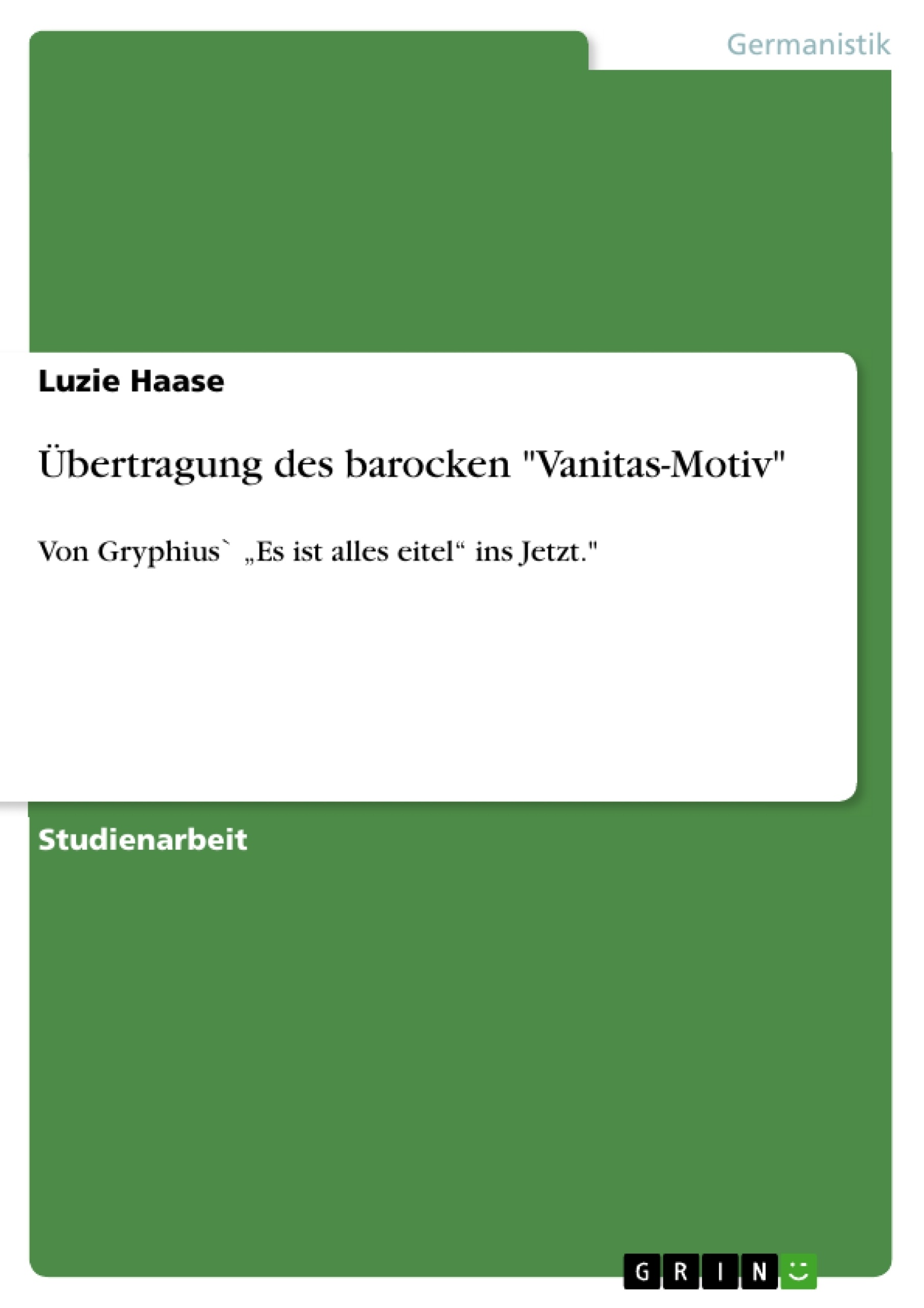Die literaturhistorische Epoche des Barocks ist in der Lyrik geprägt von einer normativen Poetik. Besonders die strenge Form des Sonetts, eine hohe Emblematik und Antithetik bestimmen die Gedichte. Der Vanitasgedanke ist dabei ein immer wiederkehrendes Motiv.
Als einer der bekanntesten Barockdichter gilt Andreas Gryphius, dessen Sonette „Abend“ und „Es ist alles eitel“ heute als Musterbeispiel für die Stilistik des Barocks gelten.
Die vorliegende Arbeit befasst sich exemplarisch für den Vanitasgedanken mit dem Sonett „Es ist alles eitel“ und klärt hier in einer Interpretation formale und inhaltliche Besonderheiten.
Die Kernaussage des Vanitasgedanken soll dann aus dieser vergangenen Epoche gelöst und auf die heutige Zeit übertragen werden. Dabei wird hinterfragt, was ein modernes Vanitas-Motiv besitzen und was es ablegen muss, um in unserer Epoche als ein solches angesehen zu werden. An Beispielen der Künstler Man Ray und Salvador Dali werden dann solche modernen Vanitas-Motive thematisiert.
Abschließend soll im Fazit ein Bogen zwischen Barock und Moderne geschlagen und diskutiert werden, um zu beurteilen inwieweit der Vanitasgedanke heutzutage aktuell ist.
Inhalt
0. Einführung in die Thematik
1. 17tes Jahrhundert: Zeitalter Barock
1.1. Barocklyrik
1.1.1. Das Sonett
2. Exemplarische Erarbeitung des Vanitasgedanken anhand des Sonetts „Es ist alles eitel“ (Andreas Gryphius)
2.1. „Es ist alles eitel“ (Gryphius, 1962: 41)
2.2. Interpretationsansatz
3. Entwicklung
4.Vanitas von der Moderne bis Jetzt
4.1. Exemplarische Beispiele
5. Fazit
6. Literaturverzeichnis
7. Anhang
- Quote paper
- Luzie Haase (Author), 2011, Übertragung des barocken "Vanitas-Motiv", Munich, GRIN Verlag, https://www.hausarbeiten.de/document/198976


